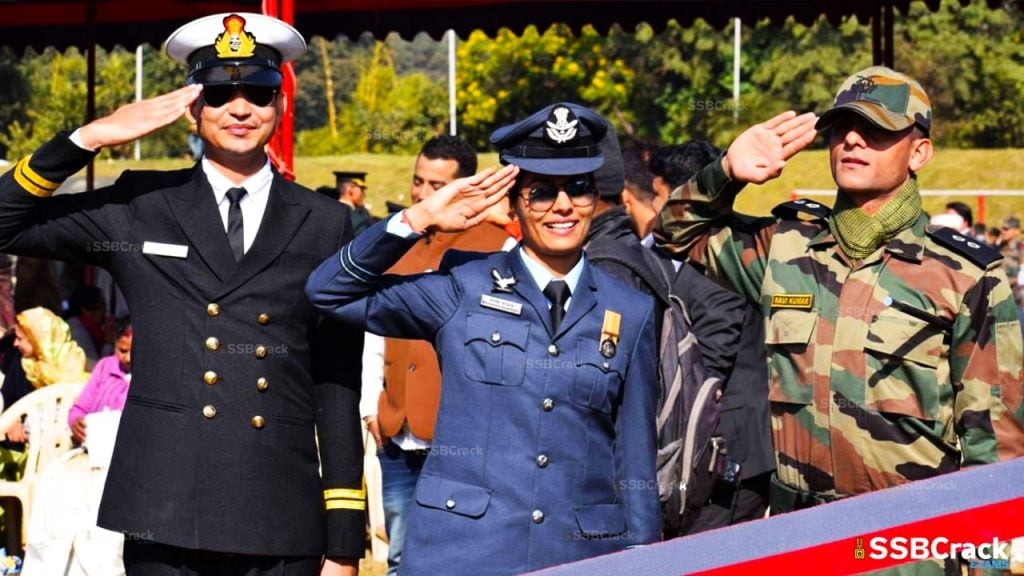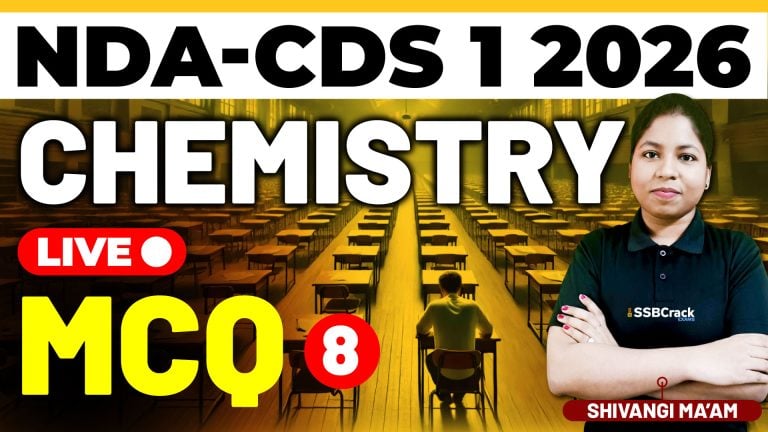The Combined Defence Services (CDS) examination serves as a crucial gateway for aspirants aiming to join the Indian Armed Forces. Conducted by the Union Public Service Commission (UPSC), this exam is pivotal for recruiting officers into the Indian Army, Navy, and Air Force. Understanding the nuances of the CDS exam is essential for candidates to prepare effectively and secure a position in one of the most esteemed professions in the country.
This comprehensive guide will delve into various aspects of the CDS exam, including its structure, eligibility criteria, selection process, and more.
Also Read | How Tough are NDA, CDS, and AFCAT Exams?
Understanding the CDS Exam
The CDS exam is not just an assessment of knowledge but a comprehensive evaluation of a candidate’s intelligence, aptitude, and personality traits. Held biannually, this examination is designed to identify individuals who possess the qualities necessary for a successful career in the military.
Examination Structure
The CDS exam consists of a written test followed by an interview process. The written examination is divided into multiple subjects, assessing candidates on their English language skills, general knowledge, and elementary mathematics. Each subject is allocated a specific duration and maximum marks, ensuring a well-rounded evaluation of the candidates’ capabilities.
Frequency and Application Process
The CDS exam is conducted twice a year, typically in February and November. Candidates can apply online through the official UPSC website, where they will find detailed notifications regarding the exam schedule, application process, and eligibility criteria.
Language and Format
The written examination is conducted in both English and Hindi, allowing candidates to choose their preferred language for the test. The format primarily consists of multiple-choice questions, making it essential for candidates to prepare thoroughly to avoid negative marking for incorrect answers.
Eligibility Criteria for CDS Exam
To be eligible for the CDS exam, candidates must meet specific criteria set by the UPSC. This includes nationality, educational qualifications, age limits, and marital status.
Nationality Requirements
Candidates must be citizens of India or subjects of Nepal or Bhutan. Additionally, Tibetan refugees who migrated to India before January 1, 1962, with the intention of permanent settlement, are also eligible. Individuals of Indian origin from various countries may also apply, provided they meet the necessary criteria.
Educational Qualifications
The educational requirements vary depending on the specific academy a candidate wishes to join:
- Indian Military Academy (IMA) and Officers Training Academy (OTA): A graduation degree in any discipline from a recognized university.
- Indian Naval Academy (INA): A graduation degree in engineering from a recognized institution.
- Air Force Academy (AFA): A bachelor’s degree with Physics and Mathematics at the 10+2 level or a Bachelor of Engineering.
Age Limits
Age limits for candidates vary by academy:
- IMA: 19 to 24 years
- INA: 19 to 24 years
- AFA: 20 to 24 years
- OTA: 19 to 25 years
Marital Status
Eligibility concerning marital status also varies:
- For IMA and INA, only unmarried males can apply.
- For AFA, both married and unmarried males are eligible, but marriage during training is prohibited.
- For OTA, both unmarried males and females can apply.
The Selection Process
The selection process for the CDS exam comprises several stages, each designed to evaluate different aspects of a candidate’s capabilities.
Written Examination
The first step in the selection process is the written examination. Candidates must excel in this stage to qualify for further assessments. The examination covers various subjects:
| Subject | Duration | Maximum Marks |
|---|---|---|
| English | 2 hours | 100 |
| General Knowledge | 2 hours | 100 |
| Mathematics | 2 hours | 100 |
Interview and Personality Test
Candidates who clear the written examination are then called for an interview conducted by the Services Selection Board (SSB). This stage assesses the candidates’ leadership qualities, officer-like attributes, and overall suitability for a career in the armed forces. The interview process includes:
- Group discussions
- Personal interviews
- Various tasks designed to evaluate leadership and teamwork skills
Document Verification
Shortlisted candidates must present original documents for verification, including educational certificates, age proof, and other relevant documents. This step ensures that all candidates meet the eligibility criteria set forth by the UPSC.
Medical Examination
Following the interview, candidates undergo a medical examination at designated military hospitals. This examination is crucial to ensure that candidates meet the physical and medical standards required for military service.
Final Merit List
The final selection is based on the cumulative performance of candidates in the written examination, interview, and medical examination. A merit list is prepared, and candidates are allocated seats in their respective academies based on their ranks and preferences.
Exam Pattern and Subjects
Understanding the exam pattern is vital for effective preparation. The CDS exam pattern is structured to evaluate candidates comprehensively.
Admission to IMA, INA, and AFA
For candidates seeking admission to the IMA, INA, and AFA, the exam pattern is as follows:
| Subject | Duration | Maximum Marks |
|---|---|---|
| English | 2 hours | 100 |
| General Knowledge | 2 hours | 100 |
| Mathematics | 2 hours | 100 |
| SSB Test/Interview | 5 days | 300 |
Admission to OTA
For those applying to the Officers Training Academy, the exam structure remains similar:
| Subject | Duration | Maximum Marks |
|---|---|---|
| English | 2 hours | 100 |
| General Knowledge | 2 hours | 100 |
| SSB Test/Interview | 5 days | 300 |
Also Read | CDS 1 2025 Notification Out, Application Form, Eligibility Criteria
Salary Structure for CDS Officers
The salary structure for candidates who successfully clear the CDS examination varies based on rank and branch of service. In addition to the base pay, officers receive various allowances and benefits.
Pay Scale Overview
The following table outlines the pay scale for different ranks in the Indian Armed Forces:
| Rank | Level | Pay Scale |
|---|---|---|
| Lieutenant | 10 | ₹56,100 – ₹1,77,500 |
| Captain | 10B | ₹61,300 – ₹1,93,900 |
| Major | 11 | ₹69,400 – ₹2,07,200 |
| Lieutenant Colonel | 12A | ₹1,21,200 – ₹2,12,400 |
| Colonel | 13 | ₹1,30,600 – ₹2,15,900 |
| Brigadier | 13A | ₹1,39,600 – ₹2,17,600 |
| Major General | 14 | ₹1,44,200 – ₹2,18,200 |
| Lieutenant General (HAG) | 15 | ₹1,82,200 – ₹2,24,100 |
| HAG+ Scale | 16 | ₹2,05,400 – ₹2,24,400 |
| VCOAS/Army CDR | 17 | ₹2,25,000 (fixed) |
| COAS | 18 | ₹2,50,000 (fixed) |
Additional Benefits
In addition to their salary, CDS officers enjoy various allowances such as:
- Dearness Allowance (DA)
- House Rent Allowance (HRA)
- Transport Allowance (TA)
- Medical facilities
- Accommodation
- Pension benefits
Training Process for CDS Candidates
Once selected, candidates undergo rigorous training tailored to their respective branches of service. This training is essential for developing the skills and discipline required for a successful career in the military.
Indian Military Academy (IMA)
Candidates selected for the Army are trained at the Indian Military Academy in Dehradun. The training focuses on:
- Leadership development
- Physical fitness
- Discipline and military tactics
Naval Academy (INA)
Successful candidates for the Navy receive training at the Indian Naval Academy in Ezhimala, Kerala. The training emphasizes:
- Maritime skills
- Navigation
- Naval operations
- Leadership development specific to naval contexts
Air Force Academy (AFA)
Aspirants selected for the Air Force undergo training at the Air Force Academy in Dundigal, Hyderabad. The focus areas include:
- Aeronautical skills
- Flying training
- Leadership within the Air Force framework
Officers Training Academy (OTA)
For candidates entering the Officers Training Academy, the training program includes:
- Leadership qualities
- Tactical training
- Physical conditioning
Age Limit for CDS Exam
The age limits for candidates applying for the CDS exam are strictly defined and vary based on the specific academy. Candidates must ensure they meet these age requirements as stipulated in the official notification.
| Academy | Age Limit |
|---|---|
| Indian Military Academy | 19 to 24 years |
| Indian Naval Academy | 19 to 24 years |
| Air Force Academy | 20 to 24 years |
| Officers Training Academy | 19 to 25 years |
Candidates should verify their eligibility concerning the age criteria on the specified date mentioned in the official notification.
Also Read | Top 13 Tips to Ace Your CDS SSB Interview
Conclusion
The Combined Defence Services examination is a vital pathway for aspiring candidates wishing to serve in the Indian Armed Forces. With rigorous selection processes, comprehensive training programs, and competitive salaries, the CDS exam offers a prestigious career opportunity for those with a passion for defense services. By understanding the exam structure, eligibility criteria, and preparation strategies, candidates can enhance their chances of success in this esteemed examination.
FAQs
1. What is the CDS exam?
The CDS exam is a competitive examination conducted by UPSC to recruit officers for the Indian Army, Navy, and Air Force.
2. How often is the CDS exam held?
The CDS exam is conducted twice a year, typically in February and November.
3. What are the eligibility criteria for the CDS exam?
Candidates must be Indian citizens, meet specific educational qualifications, and adhere to age limits and marital status requirements.
4. What is the selection process for the CDS exam?
The selection process includes a written examination, an interview by the Services Selection Board, document verification, and a medical examination.
5. What is the salary structure for CDS officers?
The salary for CDS officers varies based on rank and includes allowances such as DA, HRA, and TA, along with additional benefits like medical facilities and pension.






















